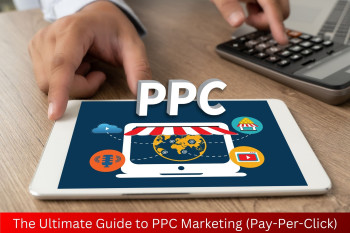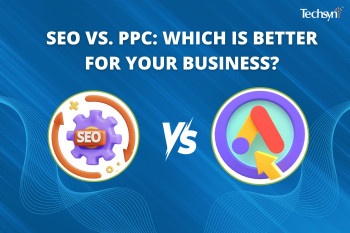5 Digital Marketing Strategies for Educational Institutions
In today's digital age, having an engaging and informative website is critical for educational institutions to attract and retain students, faculty, and staff. However, with so much content available online, it can be challenging to stand out and capture the attention of your target audience.
Creating compelling content that resonates with your audience is key to driving traffic to your website and increasing engagement. In this blog post, we'll explore some tips and tricks for creating engaging content for your education website that will help you connect with your audience and achieve your marketing goals.
Understanding of the Target Audience of an Educational Institution
The target audience for an education business can vary depending on the specific type of education being offered. Here are some examples:
K-12 schools: The target audience for K-12 schools includes parents and students in the local community who are looking for a quality education that will prepare them for college or career.
Colleges and universities: The target audience for colleges and universities includes high school students who are preparing to apply for college, as well as their parents and guidance counselors. Other potential audiences include international students, adult learners, and transfer students.
Online education providers: The target audience for online education providers includes anyone looking for flexible and convenient ways to learn, including working adults, stay-at-home parents, and students who live in rural or remote areas.
Test preparation services: The target audience for test preparation services includes high school students preparing for college entrance exams such as the SAT or ACT, as well as graduate students preparing for professional certification exams such as the LSAT or MCAT.
In general, the target audience for an education business is anyone who is interested in furthering their education and improving their skills and knowledge.
Developing a Comprehensive Digital Marketing Plan for Your Institution
In today's digital age, it's essential for educational institutions to have a comprehensive digital marketing plan in place to attract and engage prospective students. With so many options available, creating a strategic plan can seem daunting, but it's crucial to ensure your institution stands out in a competitive market. In this blog post, we'll discuss the key elements of a comprehensive digital marketing plan for educational institutions.
Define Your Goals:
Before developing a digital marketing plan, it's important to clearly define your goals. What are you trying to achieve with your digital marketing efforts? Do you want to increase enrollment numbers or improve your institution's reputation? Once you have a clear idea of your goals, you can tailor your digital marketing strategy to achieve them.
Defining your goals is the first step in developing a comprehensive digital marketing plan for your educational institution.
Here are some points to consider when defining your goals:
Identify your target audience: Before setting your goals, it is important to identify your target audience. Who do you want to reach with your digital marketing efforts? Are you targeting prospective students, parents, alumni, or other stakeholders?
Determine your key performance indicators (KPIs): Once you have identified your target audience, determine the KPIs that will help you measure the success of your digital marketing efforts. Some common KPIs for educational institutions include website traffic, lead generation, student enrollment, and engagement on social media.
Set realistic and measurable goals: Your goals should be specific, measurable, achievable, relevant, and time-bound (SMART). For example, instead of setting a vague goal like "increase website traffic," set a specific goal like "increase website traffic by 20% in the next six months."
Align your goals with your institution's overall strategy: Your digital marketing goals should align with your institution's overall strategy and objectives. Make sure that your goals are in line with your institution's mission, vision, and values.
Prioritise your goals: Once you have identified your goals, prioritize them based on their importance and impact. Focus on the goals that are most critical to your institution's success and allocate resources accordingly.
Understand Your Target Audience:
To effectively reach your target audience, you need to understand their needs and preferences. What are their pain points when it comes to choosing an educational institution? What motivates them to enroll in a program? Once you have a solid understanding of your target audience, you can create messaging that resonates with them and motivates them to take action.
Understanding your target audience is essential for any successful digital marketing campaign. Here are some points to consider:
Demographics: Determine the age range, gender, location, and other relevant demographics of your target audience.
Interests: Research the interests and preferences of your target audience. This can help you tailor your content to their interests and engage with them better.
Pain points: Identify the challenges and pain points your target audience may be facing in their educational journey. This can help you create content that provides solutions and adds value to their experience.
Behaviour: Analyze the online behavior of your target audience, such as the websites they visit, social media platforms they use, and the type of content they engage with. This can help you identify the channels and tactics that will be most effective in reaching them.
Feedback: Gather feedback from current students, alumni, and parents to understand their experience with your institution and what they value the most. Use this information to improve your offerings and messaging.
Create a Mobile-Friendly Website: In today's mobile-first world, it's critical for your institution's website to be mobile-friendly. Prospective students are likely to access your website from their mobile devices, so it's important to ensure that your website is optimized for a seamless mobile experience.
Read out: The Essentials Of Effective Website Development: A Comprehensive Guide
Mobile usage is on the rise: More and more people are accessing the internet using their mobile devices. In fact, studies show that more than 50% of website traffic comes from mobile devices. This means that if your website is not optimized for mobile, you may be missing out on a significant portion of potential traffic.
Improved user experience: Mobile-friendly websites are designed to provide a better user experience for visitors who are using mobile devices. This includes features such as easy navigation, larger buttons, and fast loading times. A better user experience can lead to increased engagement and better conversion rates.
Must Read: Creating A Website That Sells: Tips And Best Practices
Higher search engine rankings: Google has stated that it prioritizes mobile-friendly websites in its search rankings. This means that if your website is not optimized for mobile, you may be missing out on potential traffic from search engines.
Reach a wider audience: By creating a mobile-friendly website, you can reach a wider audience of potential students and parents who are using mobile devices to search for educational institutions.
Keep up with competitors: With more and more educational institutions optimizing their websites for mobile, it is important to keep up with the competition. A mobile-friendly website can give you a competitive edge in attracting potential students and parents.
Leverage Social Media: Social media platforms offer a powerful way to connect with prospective students and build brand awareness. By leveraging platforms like Facebook, Twitter, and Instagram, you can create targeted advertising campaigns, share engaging content, and interact with your audience in real-time.
Leveraging social media can be a powerful digital marketing strategy for educational institutions to connect with potential students, engage with current students and alumni, and promote their brand. Here are some points to explain how to leverage
Social Media for an Educational Institution:
Choose the Right Platforms: Determine which social media platforms your target audience is most active on and focus your efforts on those platforms. For example, Facebook, Instagram, and LinkedIn are popular platforms for educational institutions.
Develop a Content Strategy: Plan and create content that resonates with your audience, including campus news, events, student and faculty spotlights, and educational resources. Use a mix of formats, such as photos, videos, and blog posts, to keep your content engaging.
Engage with Your Audience: Respond to comments and messages promptly, and use social media to start conversations with your audience. Encourage students and alumni to share their experiences and tag your institution in their posts.
Run Social Media Ads: Use social media advertising to promote your institution to a wider audience. Target your ads based on demographics, interests, and behavior to reach potential students who are more likely to be interested in your programs.
Collaborate with Influencers: Partner with influencers, such as alumni or industry leaders, to promote your institution and attract potential students. They can share their experiences and endorse your programs on social media.
Also Read: 13 Social Media Trends To Watch In 2023 To Elevate Your Social Media Strategy
Utilize Search Engine Optimization (SEO):
Search engine optimization (SEO) is a crucial component of any digital marketing plan. By optimising your website for relevant keywords, you can increase your institution's visibility in search engine results pages and drive more organic traffic to your website.
Utilizing search engine optimization (SEO) is essential for any educational institution that wants to improve its online presence and attract potential students. Here are some key points to keep in mind:
Conduct Keyword Research: Research and identify the keywords and phrases that your target audience is using to search for educational programs or courses. Incorporate those keywords into your website content and meta tags to increase your search engine rankings.
Optimise Your Website: Ensure that your website is optimized for search engines by including relevant keywords in the page titles, URLs, meta descriptions, and image alt tags. This will improve the chances of your website appearing higher in search engine results pages.
Create Quality Content: Publish high-quality and informative content on your website, such as blog posts, articles, and guides. This will not only improve your search engine rankings, but it will also establish your institution as a thought leader in your industry.
Build Quality Backlinks: Building backlinks from other high-quality and authoritative websites in your industry can help improve your search engine rankings. Consider reaching out to other educational institutions, industry associations, and local media outlets to create opportunities for backlinks.
Monitor Your Analytics: Regularly monitor and analyze your website traffic using tools such as Google Analytics. This will help you understand how your website is performing in terms of search engine rankings, traffic sources, and user behavior. Use this data to refine your SEO strategy and improve your website's performance.
Top Institutions That Have Benefited From Digital Marketing
There are several educational institutions in India that have successfully implemented digital marketing strategies to enhance their online presence and attract more students. Some of the top institutions that have benefited from digital marketing include:
Indian School of Business (ISB): ISB has effectively used digital marketing to promote its courses and reach a wider audience. Its website is optimized for search engines, and it has a strong social media presence.
Indian Institute of Technology (IIT) Bombay: IIT Bombay has a strong online presence, thanks to its active social media accounts and a well-designed website. It also uses digital marketing to promote its online courses and attract international students.
Manipal University: Manipal University has leveraged digital marketing to reach out to students from across the globe. Its website is mobile-friendly, and it actively engages with prospective students on social media platforms.
Amity University: Amity University has implemented an effective digital marketing strategy to promote its courses and programs. It uses search engine optimization, social media marketing, and email marketing to reach out to students.
Symbiosis International University: Symbiosis International University has used digital marketing to promote its courses and programs to a global audience. Its website is optimized for search engines, and it has a strong social media presence.
These institutions have successfully used digital marketing to enhance their brand reputation, attract more students, and increase their revenue. They have set a benchmark for other educational institutions in India to follow in terms of digital marketing strategies.
Conclusion
In conclusion, digital marketing can play a crucial role in the success of an educational institution. By developing a comprehensive digital marketing plan, setting clear goals, understanding the target audience, creating a mobile-friendly website, leveraging social media, and utilizing search engine optimization, educational institutions can reach and engage with prospective students in a meaningful way.
By implementing these strategies, institutions can increase their visibility, build brand awareness, and ultimately, drive enrollment. As the digital landscape continues to evolve, it is important for educational institutions to stay current and adapt their marketing strategies to stay competitive and relevant in today's market.











